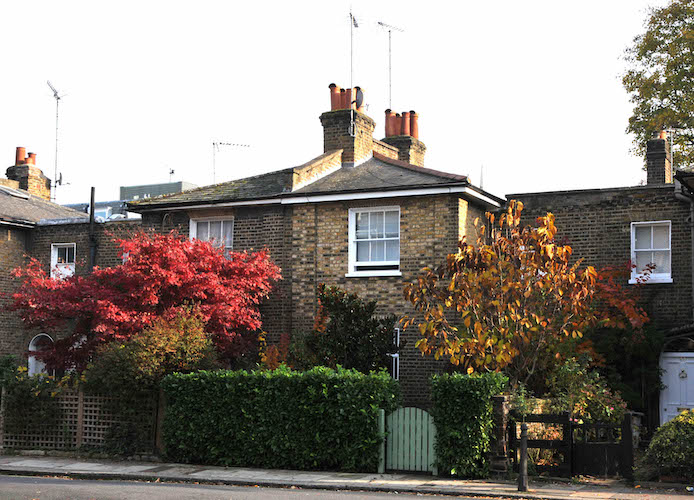Sadiq Khan’s draft London Plan has has cleared one of its final hurdles , with London Assembly members yesterday overturning a last-ditch attempt by Conservatives to reject the draft and force the mayor back to the drawing board.
The Plan is the development blueprint for the capital, setting out policies which must be taken into account when planning decisions are taken at borough level. Government approval, the last stage of a protracted process which began in 2017, is now imminent, with communities secretary Robert Jenrick to give his verdict by February 17.
While rejection of the Plan, requiring a two-thirds majority, was always unlikely given the Labour-dominated political make-up of the Assembly, the debate…unlikely given the Labour-dominated political make-up of the Assembly, but the debate highlighted some key themes for the forthcoming London Mayor and Assembly elections, with Conservative AM Andrew Boff accusing Khan of a “war on the suburbs” and fellow Tory Tony Devenish suggesting Khan would be known as the “skyscraper mayor”.
The Plan threatens “the character of our city”, Boff said, telling Khan: “With your encouragement of tall buildings, your lack of respect for the problem of overcrowding, your general encouragement to build on back gardens, lack of respect for the kind of housing and parking standards that are required in Outer London, does this plan not amount to little more than a war on the suburbs?”
Labour members were less demonstrative: “Most of us would agree that there are low density areas in Outer London where there could be an intensification of housing,” said veteran AM and former statutory deputy mayor Nicky Gavron.
The Plan is a “bold attempt to recalibrate development,” she said, by reinstating the target in a previous Plan for half of all housing to be genuinely affordable, protecting the Green Belt, seeking to meet housing need within the city’s boundaries and transferring key decision-making to the boroughs.
“The boroughs will decide how tall their tall buildings will be and whether a particular density is in character with their area. It is the boroughs that will set the targets for all tenures in terms of size mix,” she said.
A “one size fits all” approach was not appropriate, added deputy mayor for planning Jules Pipe. Nor was the Plan about “tower blocks in the middle of Acacia Avenue”, he said. Instead, it envisaged “two or three-storey mansion blocks” on unused land instead of “two semis with four or five parking spaces”.
Pipe confirmed City Hall’s tough stance against development on London’s Green Belt – which comprises 22 per cent of the city’s land area – despite the inspectors who scrutinised the Plan last year finding that the Mayor’s approach was inconsistent with national planning policy that allows changes to the protected zone in exceptional circumstances.
The debate is at the heart of what Khan called London’s planning policy “conundrum” – how to meet the need for 65,000 new homes a year within the city’s boundaries, while simultaneously protecting the Green Belt in its entirety and not only retaining but also adding to industrial floorspace were necessary.
The policy, including its “no net loss” of designated strategic industrial floorspace, was inevitably “pushing developers towards the Green Belt”, said Tory AM and newly-elected MP for Orpington Gareth Bacon, echoing Tory mayoral candidate Shaun Bailey, who said last week that there were “enough brownfield sites in London so we don’t have to build on the Green Belt”.
But it was a “myth” that there are “acres and acres of unused industrial land lying around that could be used for housing,” said Pipe. Industrial land was “at a premium”, more valuable in west London than land zoned for housing, for example, and population growth was fuelling demand for more distribution space in particular. “We can’t rely on big sheds in Luton and all those vans coming down the M1,” he said.
The Khan approach of “optimising rather than maximising density” through mixed uses as well as “intensification”, has already suffered under the inspectors’ recommendation that his “small sites” development targets for housing were unrealistic and that the overall housing target should be brought down from 65,000 to 52,000 homes a year, leaving the Mayor’s aspirations some way short of meeting the capital’s housing need as identified in City Hall analysis.
Conservative ministers have previously suggested that even Khan’s original targets underestimated London’s housing need. But with the inspectors warning of insufficient capacity both for housing and for industrial land and the mayoral election impending, they have a conundrum of their own: whether to uphold their own Green Belt policy in the face of blanket opposition from members of their own party on the Assembly, some of them representing Outer London areas.
And as Khan told the Assembly yesterday: “The bad news is that we are nowhere near even getting to the target of 52,000.”
Photo of house in Hammersmith by Omar Jan.
OnLondon.co.uk is committed to providing the best possible coverage of the 2020 London Mayor and London Assembly election campaigns. The site is small but influential and it depends on donations from readers. Individual sums or regular monthly contributions are very welcome indeed. Click here to donate via PayPal or contact davehillonlondon@gmail.com. Thank you.

